The Lowdown
The OnePlus 12 delivers a premium build, a gorgeous display, a top-of-the-line processor, an excellent set of cameras, and a larger battery with faster wired and wireless charging than any other U.S. smartphone — plus, it costs less than any other 2024 flagship, even at full price!
Does the tagline “Never Settle” still ring true? I’d say that’s a definitive yes!
Overall
Pros
- Large, beautiful display
- Excellent battery life
- Excellent cameras
- Top-of-the-line Snapdragon 8 Gen 3 processor
- Even the base model has 12GB RAM and 256GB storage
- Best-in-class wired and wireless fast charging
- Two nano-SIM slots plus an eSIM slot
- The charger is included in the box, as is a factory-installed screen protector
- IP65 dust and water resistance
- OxygenOS 14 interface on Android 14 is uncluttered and responsive
- For the price, the OnePlus 12 is an excellent value
- While you can’t see it in person at your favorite carrier, you can check it out in person at Best Buy
Cons
- The OnePlus 12 only comes with 4 years of OS updates compared to the seven years offered by Samsung and Google
- It does not have IP68 dust and water resistance
- You can’t walk into a carrier store to check it out
OnePlus blasted onto the scene in 2014 with the tagline “Never Settle” and an invitation-only limited-release of the One, cheekily billed as a “flagship killer.” The One challenged the status quo by delivering quality and performance at a shockingly affordable price that, for all it offered, some considered “ridiculously cheap.” Ten years later, the OnePlus 12 is the brand’s latest flagship, offering excellent battery life, camera performance, speeds, and charging capabilities. If you’re weighing the pros and cons before purchasing a new flagship from Samsung and Google, you should also consider the OnePlus 12.
Indulge me for a moment, and we’ll take a quick trip down memory lane.
When the OnePlus One arrived in 2014, it rocked a larger-than-average 5.5″ LCD screen, a decent (for the time) 13-megapixel main camera, and 3GB RAM; it cost $299.99 for the 16GB model and $349.99 for the 64GB model, and it was powered by the 2014 flagship processor, the Qualcomm Snapdragon 801.
Can’t remember what the flagship smartphone landscape looked like in 2014? Here you go.
- Samsung Galaxy Note 4 (Android, 5.5″ AMOLED) -3GB RAM/32GB storage (with memory card support), Snapdragon 805 processor, 16-megapixel main camera; available from AT&T ($825.99), Sprint ($720), T-Mobile, and Verizon
- Samsung Galaxy Note Edge (Android, 5.5″ AMOLED) – 3GB RAM/32GB storage (with memory card support), Snapdragon 805 processor, 16-megapixel main camera; available from AT&T ($949.99), Sprint ($840), Verizon, T-Mobile, and US Cellular
- Samsung Galaxy S5 (Android, 5.1″ AMOLED) – 2GB RAM/16GB storage (with memory card support), Snapdragon 801 processor, 16-megapixel main camera; available from AT&T ($649), and Sprint
- LG G3 (Android, 5.5″ LCD) – 2GB RAM/32GB storage (with memory card support), Snapdragon 801 processor, 13-megapixel main camera; available from AT&T, T-Mobile ($599), Sprint, and Verizon
- HTC One M8 (Windows Phone, 5″ LCD) – 2GB RAM/32GB storage (with memory card support), Snapdragon 801 processor, 4-megapixel main camera; available from AT&T, Verizon ($599.99), and T-Mobile
- HTC One M8 (Android, 5″ LCD)- 2GB RAM/32GB storage (with memory card support), Snapdragon 801 processor, 4-megapixel main camera; available from AT&T ($649), Sprint, Verizon, and T-Mobile
- Google Nexus 6 (Android, 5.96″ AMOLED) – 3GB RAM/32GB storage (no memory card support), Snapdragon 805 processor, 13-megapixel main camera; available from T-Mobile, AT&T ($649), Sprint, U.S. Cellular, and Verizon
- Moto X (Android, 4.7″ AMOLED) – 2GB RAM with 16 or 32GB User memory (no memory card support), Snapdragon 801 processor, 10-megapixel main camera; available from AT&T ($500), Verizon, and U.S. Cellular
- BlackBerry Passport (BlackBerry 10, 4.5″ LCD) – 32GB (with memory card support), Snapdragon 801 processor, 13-megapixel main camera; available from T-Mobile and AT&T ($599)
- Nokia Lumia 1520 (Windows Phone, 6″ LCD) – 16/32 GB (with memory card support), Snapdragon 800, 20-megapixel main camera; available from AT&T ($749)
- Sony Xperia Z3 (Android, 5.15″ LCD) – 3GB RAM/32GB user memory (with memory card support), Snapdragon 801 processor, 20.7-megapixel main camera; available from T-Mobile ($630)
It’s easy to see why the OnePlus caused a bit of a stir among smartphone enthusiasts, but due to the One’s invitation-only limited release, those who weren’t actively looking for something new or who were outside of the tech community probably never even registered that the OnePlus One was a “thing.”
I managed to score an invitation, and you’d better believe I quickly put in my order.
Good times, y’all.
Ten years later, when looking at the AT&T, Verizon, and T-Mobile sites, you’d be forgiven for thinking that Samsung and Google make the only flagship Android phones available.
Yet consider that just last year, OnePlus quietly entered the foldables fray shortly after the debut of the Google Pixel Fold and Samsung’s release of the latest iteration of Galaxy Z Fold — delivering a solid punch to those much bigger brands with the OnePlus Open.
Not only did the Open provide a much better foldable experience than the Pixel Fold in nearly every way, but it also solved the front-screen usability complaints nearly everyone who’s tried one has with the Z Fold series.
I called the OnePlus Open the best foldable smartphone available in the U.S. when I reviewed it, and it continues to be a daily carry along with the iPhone 15 Pro Max — that’s me doing my best to stay device agnostic, in case you were wondering.
Maybe it’s because OnePlus doesn’t employ a lottery-sized marketing budget to ensure that everyone in the United States knows it’s another Android flagship contender, or perhaps it’s because they aren’t ponying up whatever the entry fee happens to be for OnePlus devices to be sold by U.S. carriers … I don’t know.
But when we talk about the best Android slab phones in the U.S., there are seemingly two lines to choose from — last year’s Google Pixel 8 series (at least until the Pixel 9 drops in October) and the recently announced Samsung Galaxy S24 series.
But you know, there is another Android flagship option available in the United States that is made to work on our cellular networks.
I’ll say it again for the people in the back: You have another Android flagship option! Seriously! You do!
And just as it was in 2014, that other option is not available at your local carrier store. However, this OnePlus is perfectly compatible with the 4G and 5G network bands from T-Mobile, AT&T, Verizon, Visible, Mint Mobile, Google Fi, and Ultra Mobile.
What is the OnePlus 12 offering?
To start, it sports a premium aluminum and glass design that’s easy on the eyes and feels good in the hand. The 12 has a brilliant 6.82″ 2K super-fluid OLED display that offers the flagship standard of a 1- 120Hz dynamic refresh rate; it runs Android 14 skinned with OnePlus’s minimalistic yet feature-rich OxygenOS 14 overlay.
The OnePlus 12 is powered by the latest top-of-the-line Snapdragon 8 Gen 3 Mobile Platform, and it’s available in either a 12GB RAM and 256GB storage iteration or with 16GB RAM and 512GB storage.
The OnePlus 12 also comes with a generously sized 5400mAh battery that supports an incredible 80W wired fast charging in the U.S., and it delivers up to 50W wireless fast charging when you pair it with the optional OnePlus 50W Max Charging Stand that you can buy for $49.99.
Needless to say, The OnePlus 12’s wired and wireless charging speeds blow away any of the other US competition, and the fact that OnePlus includes the necessary fast charger in the box remains notable now that there are so few premium U.S. brands that still do.
If your smartphone is your main photo shooter, you’ll appreciate that the OnePlus 12 has an industry-first 50MP Sony LYT-808 wide-angle camera paired with a large aperture for even better light intake. The point is that the camera can still capture bright, clear, and sharp images in lower-light settings.
Gamers and other power users will like that the OnePlus 12 uses an advanced Dual Cryo-velocity vapor chamber (VC) cooling system that’s significantly larger and more efficient than anything offered by Google or Samsung; not only does this keep the phone cooler during intense usage, but it also serves to protect the battery’s longevity.
Unboxing the OnePlus 12
The OnePlus 12 comes with a SUPERVOOC Power Adapter, a USB Type-A to Type-C charging cable, a SIM ejector tool, a Type-A to Type-C USB dongle, a sheet of OnePlus logo stickers, a quick start guide, a welcome letter, a Red Cable membership card, and a safety information and warranty card.
As is usual with OnePlus, there is also a pre-applied screen protector.
While there will certainly be those who’ll immediately rip that protector off so their fingers can glide across the smooth Corning Gorilla Glass Victus-covered display, I appreciate it being there.
A Walk-Around the OnePlus 12
The OnePlus 12 measures 6.48″ long by 2.99″ wide by 0.39″ thick—or 0.48″ thick if you include the area with the protruding camera module—and weighs 7.8 ounces.
The front is dominated by the 6.82″ 2K super-fluid display, which has a 3168X1440 (QHD+) resolution, 510 pixels per inch, a 19.9:9 aspect ratio, and 10-bit color Dolby Vision support. The 12’s ProXDR Display uses low-temperature polycrystalline oxide (or LTPO) technology to provide a dynamic refresh rate ranging from 1 to 120Hz.
You can expect your viewing experience to be smooth and lag-free when scrolling on a webpage, swiping between apps, or gaming; it will automatically slow down to a lower refresh rate to conserve the battery when doing more static activities onscreen, like reading eBooks or documents.
The display is not super-reflective and is very easy to see, even in direct sunlight.
At the center top, there is a punch-hole for the selfie camera, which houses a 32-megapixel fixed-focus 1/2.74″ Sony IMX615 lens with a ƒ/2.4 aperture, electronic image stabilization, a 90º field of view, and a 21mm focal length. Directly above it is a very skinny ear speaker that measures about 1.22″ long.
While the curved edges of the screen and back seamlessly blend with the aluminum frame, and the overall design is cohesive and elegant, the OnePlus 12’s curved display is perhaps my only quibble with this smartphone’s design.
To be fair, the curved edges make the OnePlus 12 feel good in my hand, and the display’s edges aren’t so severely sloped that I’ve had any obnoxious issues with color distortion. However, there are still some of the usual mistouches and dropped apps when I’m trying to move them from one screen to another, which is par for the course with curved displays.
The OnePlus 12’s top edge has two antenna bands, a microphone, an Infrared remote, and a stereo speaker. The phone has Dolby Atmos support, which provides great sound — including decent bass — from the speakers.
OnePlus’s Infrared remote can communicate with 15 types of electronic devices—including air conditioners, lights, cameras, heaters, robotic vacuum cleaners, electric curtains, and others. I find this feature really handy for controlling my office television, soundbar, and heater.
If you’re used to using separate remotes for different devices, you’ll find that controlling them directly from your smartphone through the OnePlus Infrared app is really handy!
The usual power button and volume rocker are on the right side.
The OnePlus 12’s bottom houses two antenna bands, a dual nano-SIM tray (the phone will also work with eSIM for a maximum of two lines), a microphone, a USB Type-C 3.2 Gen 1 port for faster file transfer speeds, and a stereo speaker.
On the left are two antenna bands and a 0.27″ long slider button, allowing you to easily put the phone in silent, vibration, and ring modes. The slider has a raised and textured design, making it easy to find without looking; it slides into each position with a click accompanied by a vibration when set to Ring or Vibrate.
The OnePlus 12 is available in either Silky Black or Flowy Emerald. The Flowy Emerald model I received has a matte green Corning Gorilla Glass 5 back with a marbled appearance. This matte glass back is ever so slightly textured and doesn’t feel slippery in hand; I also appreciate that it isn’t a smudge or fingerprint magnet.
The green marbling effect continues inside the 2.13″ diameter Hasselblad camera module, which also has an eye-catching (without being obnoxious) slightly glittery appearance when the light catches it.
If you find the Flowy Emerald just a little too eye-catching, and you don’t plan on popping your OnePlus 12 in a case, then I think you’ll find the Silky Black version more to your liking. It has a matte black, slightly textured Gorilla Glass 5 back, but it won’t “pop” quite as much as this green does.
The camera module is reminiscent of the OnePlus 11‘s design; on the Flowy Emerald colorway, it has a shiny green aluminum bezel with an edge that flows from the left side of the camera module to contain the large LED flash/flashlight and continues into the phone’s right side aluminum frame.
The OnePlus 12 Cameras
There was much to love about the OnePlus Open‘s camera setup, so I am happy to see that, except for the new primary shooter, the ultra-wide and the telephoto cameras haven’t changed.
The primary camera is on the upper left, and it boasts a 50-megapixel 1/1.4″ Sony LYT-808 sensor with an aperture of f/1.6, autofocus, optical image stabilization (OIS), electronic image stabilization (EIS), an 85º field of view (FoV), and an equivalent focal length of 23mm.
The ultra-wide camera to its right features a 48-megapixel 1/2″ Sony IMX581 sensor with an aperture of f/2.2, autofocus, electronic image stabilization (EIS), a 114º FoV, and an equivalent focal length of 14mm. It also supports macro shooting at a range of 1.38″ (3.5cm).
The bottom left telephoto camera uses a periscopic design to extend the optical zoom range. It integrates a 64-megapixel 1/2″ OmniVision OV64B sensor with an aperture of f/2.6 and is equipped with autofocus, OIS, and EIS. It has a 33º FoV and an equivalent focal length of 70mm at 3X optical zoom and 145mm at 6X in-sensor zoom.
On top of that, the telephoto camera can achieve up to 120X zoom with its Ultra Res Zoom feature — assuming you can hold your hand steady enough to get a decent shot!
The fourth “lens” in the bottom right corner houses the 13-channel multi-spectral sensor, which captures accurate colors of objects or scenes no matter the ambient light around the subject.
The OnePlus 12 also offers a variety of video recording capabilities.
It supports recording in 8K resolution at 24 frames per second (fps), providing high-resolution video content. You can also capture videos in 4K resolution at both 30 and 60 fps and in 1080p and 720p resolutions at the same frame rates.
The device includes Dolby Vision HDR support for vivid and dynamic colors in your recorded footage for enhanced video quality. The Ultra Steady video feature also enables smooth recording at 1080p and 60 fps, minimizing camera shake for steady footage.
Pro Mode allows you to customize settings for 4K video recording at 30 fps for greater control over the final output. Slow-motion video recording is available at 1080p resolution with frame rates of 240 and 480 fps and at 720p resolution with the same frame rates.
Time-lapse recording is supported at 4K and 1080p resolutions, providing creative options for capturing time-lapse sequences. The OnePlus 12 offers digital zoom functionality with a maximum zoom capability of up to 20X, allowing you to zoom in on subjects while recording.
Dual-view video recording is possible at 720p resolution and 30 fps for capturing multiple perspectives simultaneously, and the OnePlus 12 has a built-in video editor so that you can edit recorded videos in the Camera app.
Photos Taken with the OnePlus 12
OnePlus is now in its fourth year of partnership with Hasselblad. The camera maker’s branding is evident on the 12’s retail box, the 12’s camera module, the orange shutter button in the camera app, and how the camera’s software has been tuned.
The first time you open the camera app, after confirming whether or not you want to enable location services, you’ll be asked if you want to add the Hasselblad watermark to your photos. It is set to “on” by default, but a simple toggle will turn it off.
While it might be a bit obnoxious for regular photos you’d take and share on social media, this Hasselblad watermark is handy because it shows information regarding each photo taken.
Modes in the camera app include Master (formerly Pro), Video, Photo, Hasselblad Portrait, and “More,” which includes Night, Hi-Res, Pano, Movie, So-Mo, Time-Lapse, Long Exposure, Dual-View Video, Text Scanner, Tilt-Shift, and XPAN, which can be edited to your preference if there’s a particular mode you’d prefer available on the main menu.
The revamped Hasselblad-tuned Master mode shoots in JPG or RAW. It offers useful settings, including tint, sharpness, contrast, and saturation, which can be adjusted before taking the photo so you can fine-tune your images.
I found the OnePlus 12’s camera extremely capable; here are some examples.
OnePlus 12 Processor and Battery Life
The OnePlus 12 runs Android 14 with an OxygenOS 14 overlay; it’s powered by the Snapdragon 8 Gen 3 Mobile Platform, and depending on the version you choose, your device will either come with 12GB LPDDR5X RAM or 16GB LPDDR5X RAM.
RAM expansion of up to 12GB is also available in the settings, allowing you to allocate some of the phone’s available 256GB or 512GB storage memory to expand your device’s available RAM.
Complementing the Snapdragon 8 Gen 3 processor and the LPDDR5X RAM is what OnePlus calls the Trinity Engine, which intelligently allocates the 12’s resources to give you a consistently fast and smooth experience and longer battery life, especially when you’re running demanding apps.
As a result, the OnePlus 12 is a very snappy and responsive smartphone. Whatever voodoo OnePlus has running under the hood, not once has the 12 lagged or stuttered when I was using it.
We should talk about the battery life because, in a word, it is superb. I’m amazed that I can consistently get more than a full day of heavy use from it, and the battery lasts well into the second day if I don’t charge it overnight.
Speaking of charging — the speedy 80W SUPERVOOC wired fast charging takes just 30 minutes to charge the OnePlus 12 from empty to 100% or 12 minutes to charge it from empty to 50%.
If you prefer wireless charging, you’ll love this — the OnePlus 12 can wirelessly charge at 50W when using the optional $49.99 OnePlus 50W Max Charging Stand; it can go from empty to full in just 46 minutes, and it works when the 12 is in either landscape or portrait mode!
Think about that for a moment; 50W wireless charging on the OnePlus 12 is twice as fast as the Samsung Galaxy S24 series’s 25W wired charging speeds and 54% more quickly than the Google Pixel 8’s 27W wired charging speeds.
It’s worth mentioning that the Galaxy S24 series only offers 15W wireless charging, while the Pixel 8 series offers 18W wireless charging — if you’re using the optional 2nd generation Google Pixel Stand that sells for $79.
In other words, whether you’re charging via wired or wireless, the OnePlus 12’s charging speeds run circles around the speeds of other US smartphones. The 12 also offers reverse charging when you need a convenient spot to top off your earbuds.
Using the OnePlus 12
Julie Strietelmeier and I had an ongoing conversation during the years we wrote together at The Gadgeteer. One of us would say something along the lines of, “What’s missing that would make _____ your daily driver?” Or, “I can’t put my finger on why, but I like how ____ does ____ better than how the _____ does the same.”
It was also just as common for one of us to say, “The _____ could never be my daily driver because it can’t do_____ like the _____ can!” Or, “Man, I just love how the _____ feels in hand, but I hate the way it _____!” Or “Why is the ____ so freaking expensive?!”
Bear in mind that this was from 2000 through 2006, so it was a different era, but as each year’s latest batch of PDAs would come out, the conversation would inevitably pick up again.
Naturally, the conversation eventually turned to smartphones as PDAs phased out, whether they were running PalmOS, Pocket PC Phone Edition (later called Windows Mobile), Symbian, or BlackBerry (although I was never a big fan of the latter).
One of us might say, “I like the camera on the _____ better, but I like the screen size on the _____ more,” or “I love the design quality of _____, but OMG, can you believe how expensive it is?” Or “Why does the _____ feel so plasticky? Oh … that’s not metal, it is plastic. Ew.”
Something always kept any one device from being “perfect” — which is still true today! So, the realistic goal is to find the phone that gives you enough reason to want to use it as your daily driver.
Sure, there might be something the ____ had that you wished your _____ had, but that particular missing feature shouldn’t be enough to make you regret your decision.
I’m starting this section with that anecdote because it still applies. There is no one perfect device; every single brand-new flagship smartphone has something that is going to feel like a compromise, even if you like everything else about the phone. And that something is going to be different for every single person.
And for me, with the OnePlus 12, that something I wish I could change is the curved display. There, I said it. If OnePlus were to take a page from Google’s and Samsung’s playbook and go to a flat display, I would have no real complaints about this device — and since that is such an obviously personal preference, it may not even matter to you!
Yes, it would be nice if the OnePlus 12 had an IP68 dust and waterproof rating like the Pixel 8 and S24, but I have never dropped my phone in a pool or any other body of water, and it’s not something I actively worry about.
It’s more important to me that the phone has IP65 dust and water resistance, which means it is fully protected from dust and can be sprayed with jets of water from all directions (it just shouldn’t be submerged) — and thanks to Aqua Touch technology, the display actually works when it (or your finger) is wet!
So, what’s great about the experience of using the OnePlus 12?
To start, I was glad to find that the OnePlus 12’s in-display fingerprint reader is not only conveniently placed several inches up from the bottom of the display (rather than a bit lower, as it has in some past models), but it has been fast and dead-on accurate every time.
Facial unlocking works well, too, but as is always the case with Android phones, you won’t be able to use it to do much more than open your phone.
The OnePlus 12 uses the brand’s custom OxygenOS 14 interface on top of Android 14. Rather than adding a lot of bloatware or niche “features” (I’m looking at you, Samsung! One UI continues to be atrocious!), OxygenOS14 provides an intuitive, responsive, and secure experience while still allowing you to personalize and customize the phone a bit more than you could on stock Android.
You can set the OnePlus 12’s screen resolution to Auto-Select, which saves power by switching the screen resolution according to the display content, standard (2376×1080) for longer battery life, or 3168×1440 for sharper images.
You can also opt for Adaptive details enhancement, which means the phone will intelligently recognize the scene and bring out subtle details for video and reader apps.
You have the option of setting the screen refresh rate to Auto, which uses the optimal refresh rate for the device to give a smooth experience while conserving battery power; Standard, which sets a maximum refresh of 60Hz to conserve the battery, or High, which uses a refresh rate of up to 120Hz for optimal visual effects and the smoothest possible experience.
You can also set an app-specific refresh rate, so if there is a game that you want to always run at 120Hz, you can set it to do so.
It’s kind of interesting to scroll through the list of app-specific refresh rates and see how many have 120Hz set as the default, but there are quite a few that also list 60Hz or 90Hz.
Special Features are available for the OnePlus 12, including Split View, where you can display two apps simultaneously for easier multitasking. Floating Window adds a smaller floating window in the main display for easier access.
Quick Return allows you to tap a tile to return to a particular app in either fullscreen or a floating window, among other tricks. Quick Launch will enable you to add frequently used functions or apps to the lock screen.
Smart Sidebar quickly launches apps and functions from a sidebar dock. Kids Mode lets you create a safe space with timed access to your approved apps. Simple Mode gives you larger text, bigger icons, and louder sounds. Zen Space allows you to stay focussed with limited interruption from your phone.
It’s worth noting that the OnePlus 12’s display has a peak brightness of 1600 nits during regular use and a rather astonishing 4500 nits at its absolute peak brightness.
No, this doesn’t mean that the OnePlus 12’s pixels glow so bright that they’ll blind your unsuspecting retinas, but it does mean that what’s on the display will be visible even when used outside in direct sunlight; video images shot in poor light (like the notoriously dark Game of Thrones episode, “The Long Night”) will be easier to see, even when you’re watching in a well-lit room.
Gamers and power users will appreciate the OnePlus 12’s two-part Cryo-velocity vapor chamber (VC) cooling system, which is significantly larger and more effective than anything being offered by its competitors.
I can say from personal experience that the 12 has never been more than slightly warm when I was using it, and the camera has never shut itself down because it got too hot.
The OnePlus 12 has excellent stereo speakers, and it delivers immersive sound complete with Dolby Atmos technology, which is great when watching videos without headphones. It also sounds fab when listening to it over a Bluetooth headset.
Finally, it’s worth mentioning that the OnePlus 12 comes with little to no bloatware. Google apps come pre-installed along with OnePlus’s file manager, game mode, and voice recorder, but Nexflix is the only extra pre-installed app, and if you don’t want it, you can uninstall it.
I tested the OnePlus 12 on AT&T’s 4G and 5G networks in Eldorado, Christoval, and San Angelo, Texas. I encountered no issues; calls were clear, and data speeds were as expected.
The 12 is also compatible with T-Mobile and Verizon networks, but I should mention that it lacks mmWave 5G support. While this is not a problem for my use, it could be an issue if you have access to and want to use mmWave 5G connectivity.
Using the OnePlus is great in every scenario — I have nothing negative to say about the experience or its performance.
Should You Buy the OnePlus 12?
I’m going to say this up front: if you routinely keep the same mobile phone for more than four years, the OnePlus 12 might not be the best choice.
It will come with four years of major Android OS updates and five years of security updates, but that’s a bit lower than the impressive seven generations of OS upgrades and seven years of security updates the flagship Samsung S24+, S24 Ultra, and Pixel 8 Pro offer. But again, this is only an issue if you typically stay on the same device for longer than four years.
If you’re someone who likes to waltz into your carrier’s store and fondle all the new phones before you buy one, the fact that you won’t be able to do that with the OnePlus 12 might seem like a buzzkill.
But if you have a local Best Buy, yours may be one of the stores with the OnePlus on display, so you can compare them directly to see which display you like better and which feels better in your hand.
With all of the features that the OnePlus 12 offers, it stacks up very well against the other flagships. But how does it compare price-wise? Is it still a “good buy”?
To compare unlocked prices without considering any trade-in offers or discounts, consider that the 256GB OnePlus 12 is $799.99, and the 512GB OnePlus 12 is $899.99.
Contrast that to the 256GB Google Pixel 8 Pro at $1059, the 512GB Google Pixel 8 Pro at $1179, the 256GB Samsung Galaxy S24+ at $999, the 512GB Galaxy S24+ at $1199, the 256GB Galaxy S24 Ultra at $1299, and the 512GB Galaxy S24 Ultra at $1499.
These are all great phones, don’t get me wrong, but if we are looking at features and price, the OnePlus 12 should absolutely be on your shortlist.
And finally, OnePlus is offering the following incentives when you purchase a OnePlus 12 directly from them:
- You can trade in ANY phone, in ANY condition, for a $100 guaranteed instant credit. With Eligible Trade-in, you can also get up to $700 instant credit.
- Until February 18th, you’ll be upgraded to 512GB for the price of the 256GB model.
- OnePlus is offering up to 12 months of financing with 0% APR.
- You’ll get a $30 coupon to use on Buds 3 when you purchase the OnePlus 12.
- When you purchase the OnePlus 12, you’ll have the option of bundling some related add-ons, including the OnePlus AIRVOOC 50W Wireless Charger for $49.99, the OnePlus Pad in Halo Green for $379.99 (20% off the usual $479.99), OnePlus Buds Pro 2 in Obsidian Black, Arbor Green, or Misty White (Limited Edition) for $107.99 (40% off the usual $179.99), OnePlus SUPERVOOC 100W Dual Ports Power Adapter for $29.99 (40% off the usual $49.99), and the OnePlus 12 Aramid Fiber Bumper Case in Aramid Black for $20.99 (30% off the usual $29.99).
If you’re more interested in exploring foldables, you can’t go wrong with the OnePlus Open, but if you prefer a more traditional slab-style smartphone, you can’t go wrong with the OnePlus 12.
The OnePlus 12 delivers a premium build, a gorgeous display, a top-of-the-line processor, an excellent set of cameras, and a larger battery with faster wired and wireless charging than any other U.S. smartphone — plus, it costs less than any other 2024 flagship, even at full price!
Does the tagline “Never Settle” still ring true? I’d say that’s a definitive yes!
The OnePlus 12 is on pre-order now, with open sales starting on February 6th; it starts at $799.99 and is available directly from the manufacturer and other retailers, including Amazon and Best Buy.
Source: Manufacturer supplied review sample
What I Like: Large, beautiful display; Excellent battery life; Excellent cameras; Top-of-the-line Snapdragon 8 Gen 3 processor; Even the base model has 12GB RAM and 256GB storage; Best-in-class wired and wireless fast charging; Two nano-SIM slots plus an eSIM slot; The charger is included in the box, as is a factory-installed screen protector; IP65 dust and water resistance; OxygenOS 14 interface on Android 14 is uncluttered and responsive; For the price, the OnePlus 12 is an excellent value; While you can’t see it in person at your favorite carrier, you can check it out in person at Best Buy
What Needs Improvement: The OnePlus 12 only comes with 4 years of OS updates compared to the seven years offered by Samsung and Google; It does not have IP68 dust and water resistance; You can’t walk into a carrier store to check it out

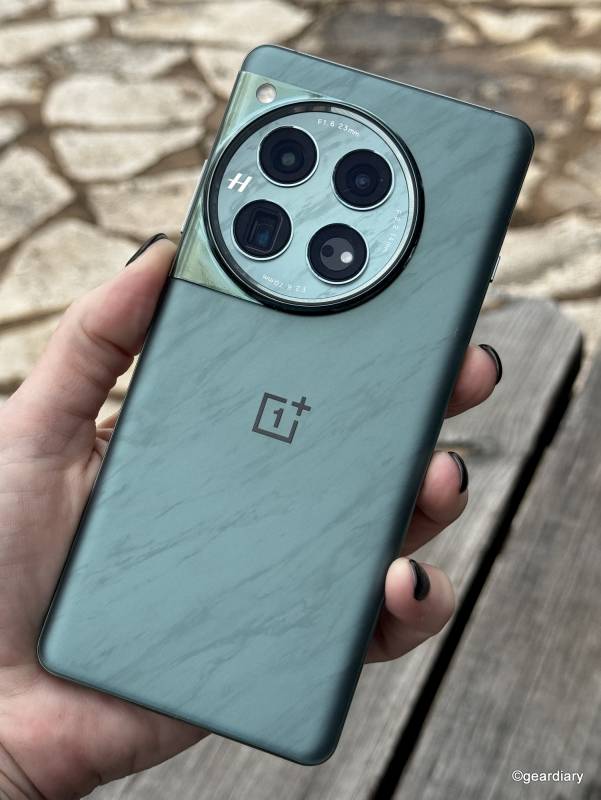

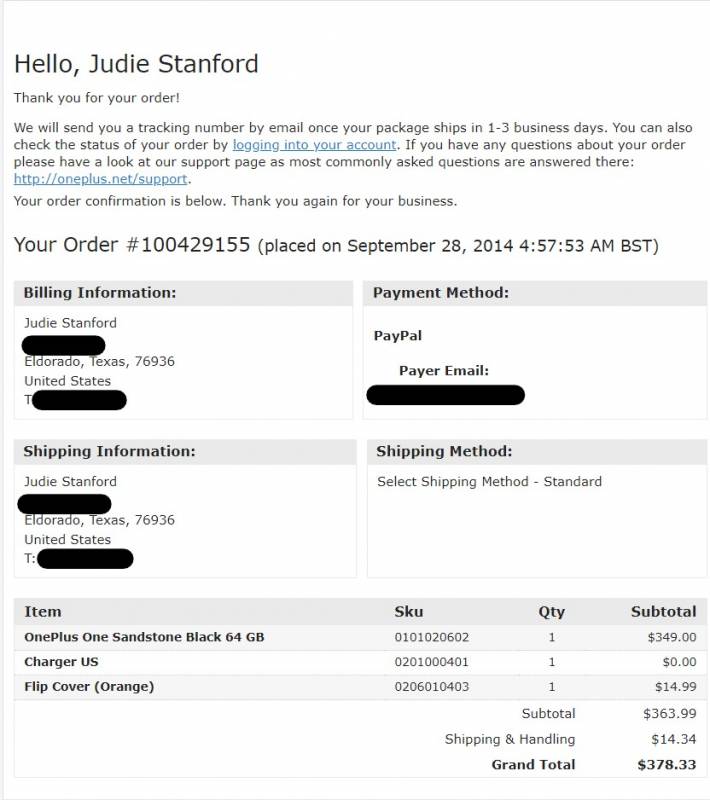
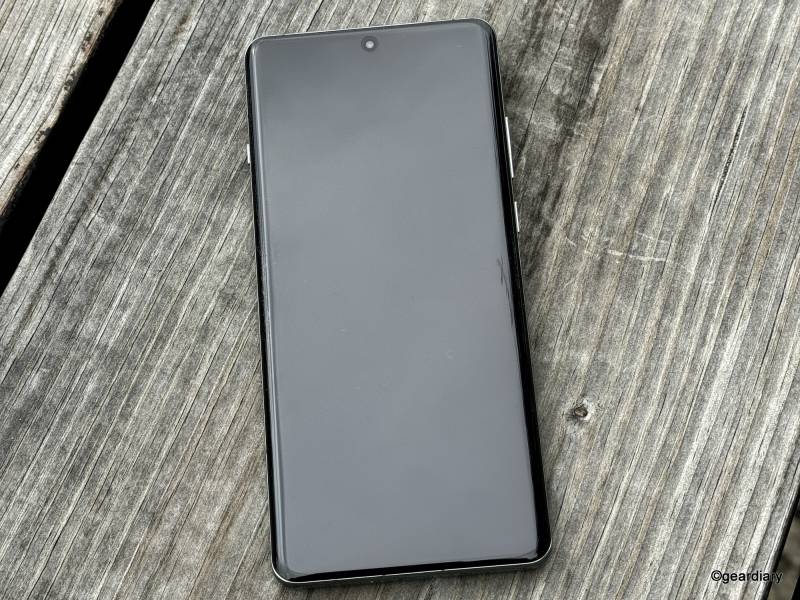
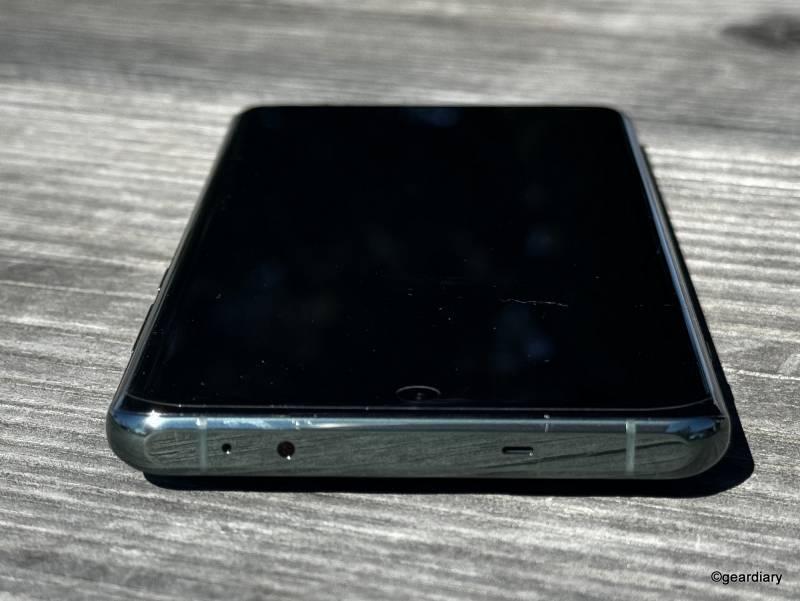
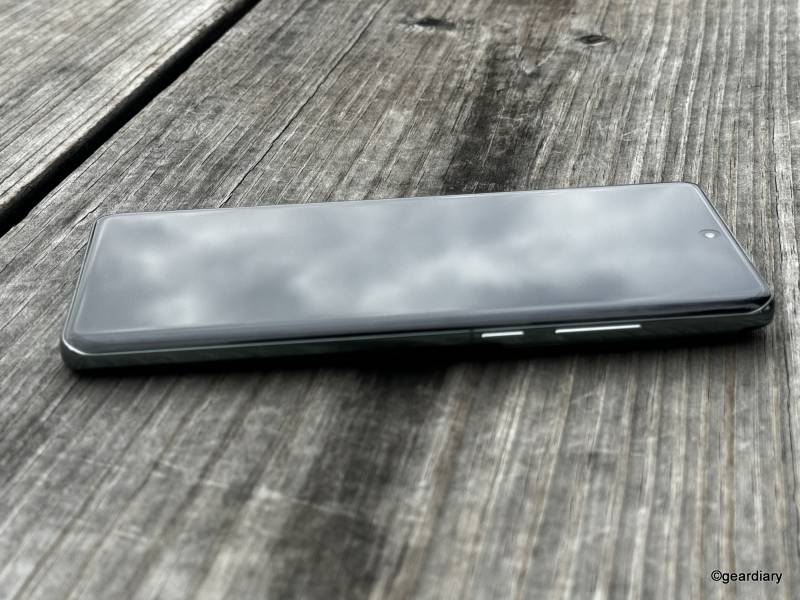
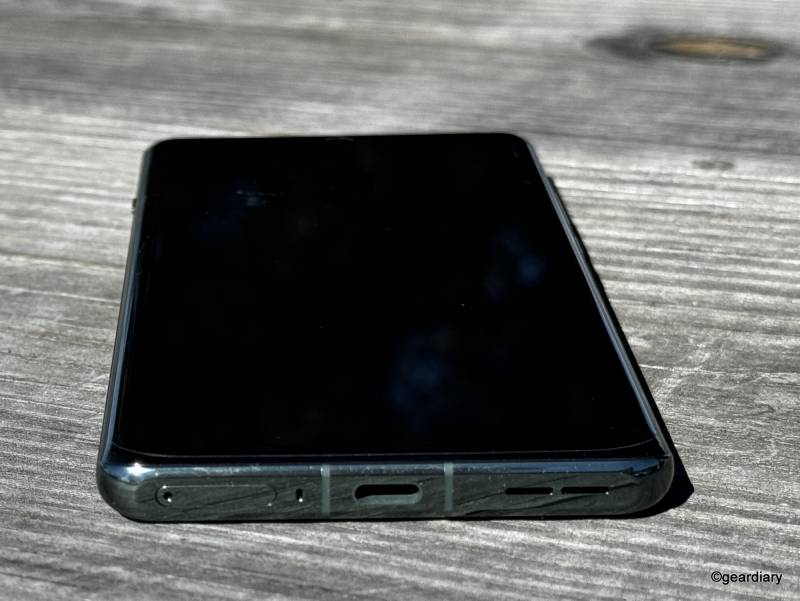
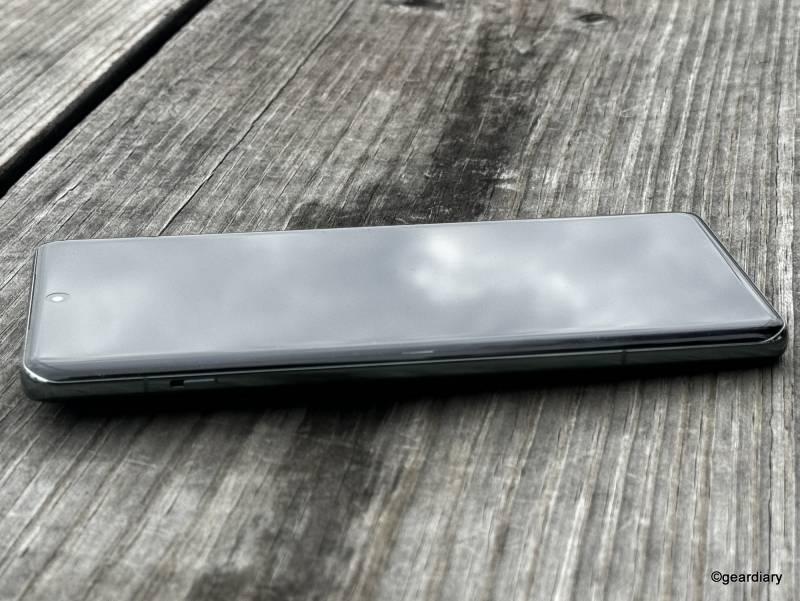
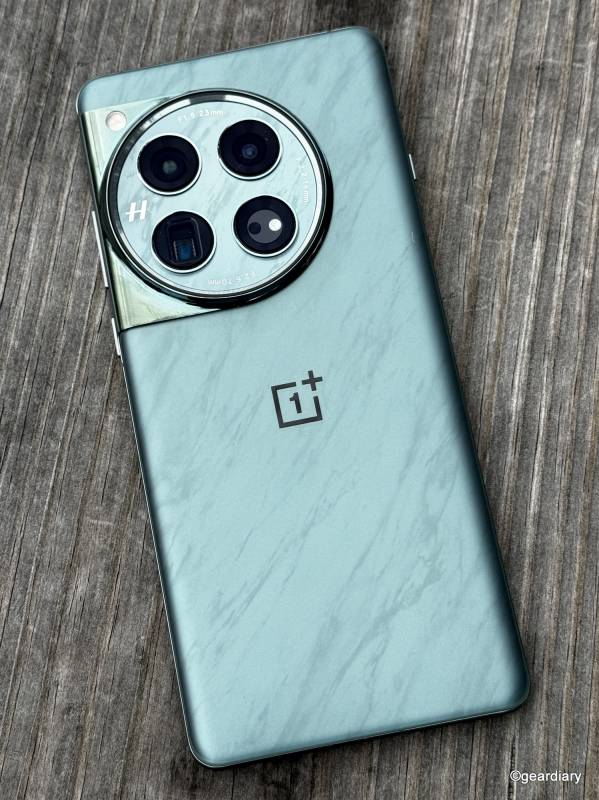

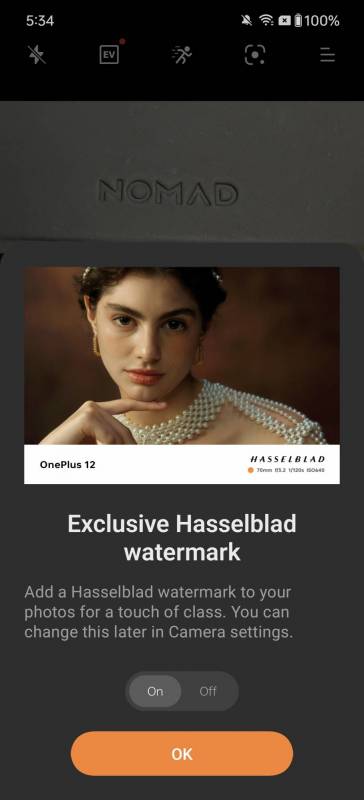
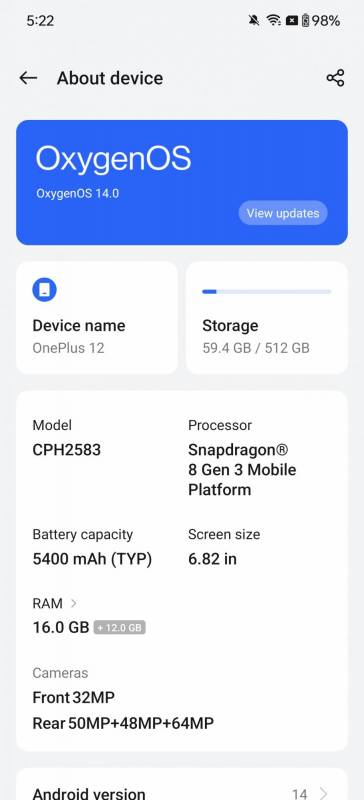

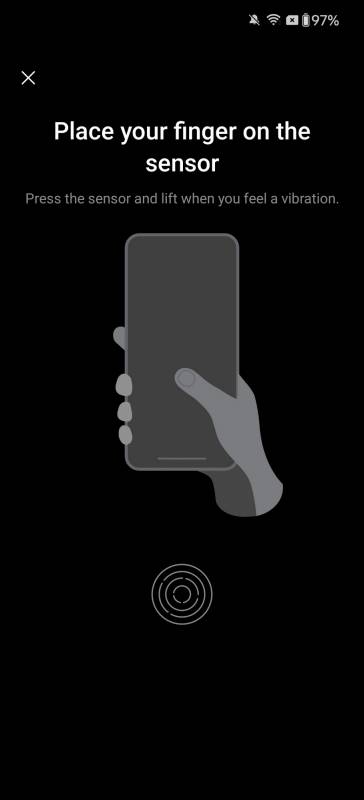

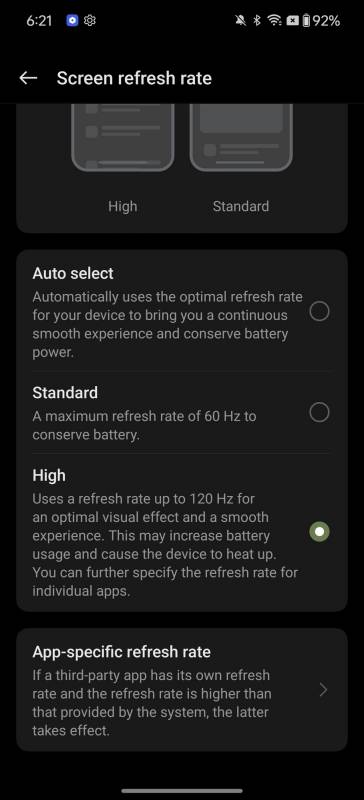


The One Plus 12 sounds just like what I need. Affordable good camera & the price is rigt